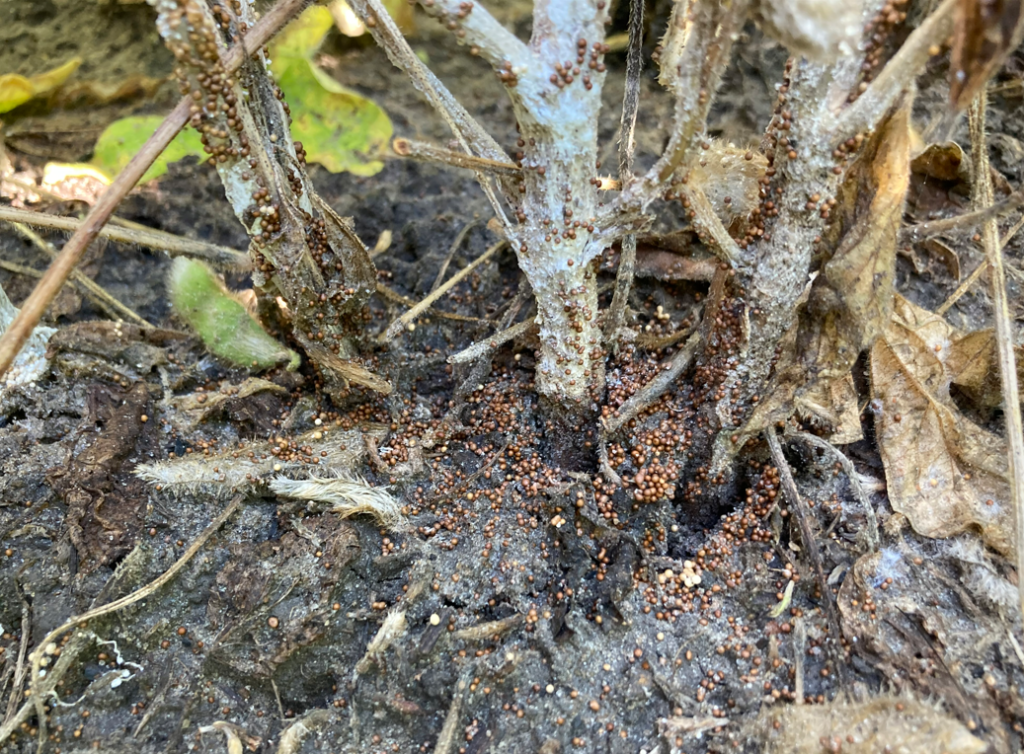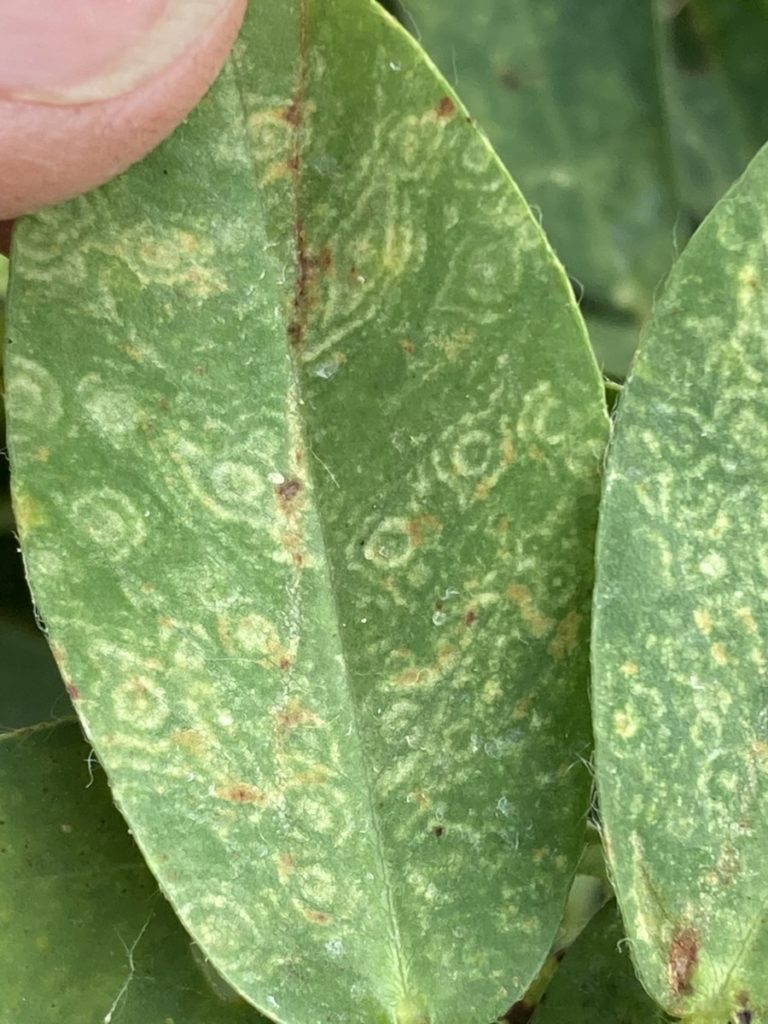With the rain comes increase disease pressure. Here’s some info on disease ID and management as well as peanut growth regulators.

Fungicides (Headline, Priaxor, Quadris, Elatus, Miravis Top, and Twinline) can reduce
premature defoliation resulting from target spot. Based upon trial results, timings of applications that most consistently reduce premature defoliation are those that are made during the first and third weeks of bloom; the third week of bloom seems especially critical. Tebuconazole is not as affective against Target Spot compared to other fungicides.




Peanut Plant Growth Regulators – Monfort.
Info below taken from comments from Dr. Scott Monfort, UGA Peanut Agronomist.
“Kudos” or “Apogee” on irrigated peanuts. Prohexadione calcium should not be applied until
the canopy is 90%+ lapped for singles and 100% for twin. Sequential applications (3.6 to 5.4 ounces per
acre followed by 3.6 to 5.4 ounces per acre) spaced two weeks apart are recommended in Georgia on
runner peanuts. Include a crop oil concentrate (COC, 1 qt/A) and nitrogen solution (UAN) or ammonium
sulfate (AMS) at 1pt or 1lb/A to help with plant uptake and consistency of performance.
Kudos/Apogee requires eight hours for absorption by the peanut foliage to be effective. Kudos/Apogee
is not recommended on plants that are under stress due to lack of moisture, disease pressure, or other
stress conditions. With this in mind, Kudos/Apogee is only recommended in irrigated fields.
Based on communication with Fine-Americas and BASF, Kudos/Apogee has been shown to be
compatible with many of the fungicides and insecticides growers utilize in peanut. However, I would
encourage growers to leave out the crop oil when mixing with fungicides and insecticides. I did notice a
problem last with chlorothalonil and tebuconazole causing some burn when mixed with Kudos/Apogee +
AMS + COC. I would not mix Kudos/Apogee with herbicides, fertilizers or biological stimulants. We do
not know what will happen when these products are mixed with the growth regulator. At the cost of the
growth regulator, I would not want to minimize the growth control and/or yield response to save a trip
across the field.
